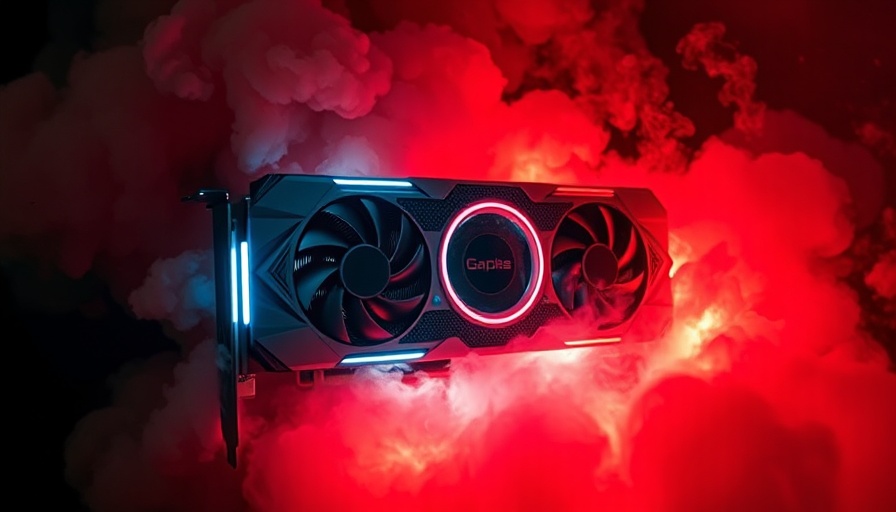
Is Google's Gemma 3 the Game-Changer We've Been Waiting For?
In an ever-evolving tech landscape, Google’s latest large language model, Gemma 3, is stirring discussions about the future of artificial intelligence (AI) and the hardware that powers it. Unlike its predecessors, Gemma 3 has been designed to deliver high performance from a single H100 chip, promising a major shift in how we utilize computing resources for AI applications.
A Model Built for Efficiency
Gemma 3, as reported by several outlets, is said to outperform other leading models such as DeepSeek and Llama-405B, achieving approximately 98% of DeepSeek's accuracy while relying on far less computational power. This efficiency is achieved by leveraging ‘distillation’ of neural networks — a process that enables the model to retain the critical learning from larger, more complex models without carrying their immense computing requirements.
Implications for Chip Manufacturers
The implications of this development could be profound, particularly for companies like Nvidia, which have enjoyed robust demand for their graphics processing units (GPUs). With smaller models like Gemma 3 proving capable of delivering performance at a fraction of the cost, analysts fear a potential cliff in GPU demand could ensue. Nvidia's stock price already reflects some anxiety, having dropped from a recent high of $153 to around $113 as concerns mount about future sales.
The Economic Ripple Effect
This trend of diminishing chip dependency could have widespread economic repercussions. If smaller models can effectively handle the tasks traditionally assigned to larger systems, the demand for high-end chips may wane, leading to a reevaluation of how companies approach their hardware strategies. The market dynamics around AI computing could shift from reliance on expensive, high-performance GPUs to a more balanced portfolio that includes a variety of cost-effective solutions.
Will Smaller Models Suffice?
While Google's Gemma 3 shows promise, one has to ponder whether these smaller models can fully replace the performance capabilities and robustness of larger models in more intensive applications. There remains a question of whether compromising on hardware will lead to a deterioration in the quality of AI outputs or introduce unpredictabilities that could undermine confidence in decision-making processes that rely on AI.
Future Predictions: The Age of AI Efficiency
Looking ahead, the paradigm shift proposed by Gemma 3 offers a glimpse into a future where AI efficiency becomes the norm. As companies increasingly seek to reduce operational costs while maintaining technological advancements, the focus will likely shift towards innovation that maximizes performance within existing hardware capabilities.
Google’s approach encourages an exciting dialogue about the potential for enhanced user experiences through smaller, yet powerful, AI models. However, it remains to be seen whether the broader tech industry can keep pace with these innovations without sacrificing quality or capability.
Conclusion: Embrace the Change
The developments surrounding Google's Gemma 3 model highlight the intersection of AI and hardware efficiency. For businesses and consumers alike, embracing these changes can lead to significant benefits — from reduced costs to enhanced operational effectiveness. As we move forward, it’s imperative to stay informed and adaptable to the rapidly changing landscape of AI technology.
To navigate these exciting times in artificial intelligence, staying educated on developments such as Gemma 3 is essential. Understanding these emerging technologies will empower you to leverage their potential in your own projects and strategies.
 Add Row
Add Row  Add
Add 




 Add Row
Add Row  Add
Add 

Write A Comment